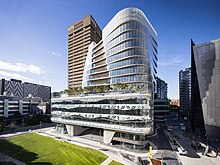Proportionate Response Needed for Research Espionage Threats
Australia’s research institutions are targets for nefarious actors, from China and elsewhere. The Australian Security Intelligence Organisation (ASIO) has publicly tabled an “awareness” of various attempts to compromise the sector.
What are we doing about it? Not enough, according to critics.
One recent charge is that Australia “lags behind” its allies and partners in responding to threats to “research security” such as espionage, foreign interference and theft of intellectual property, emanating overwhelmingly from China.
This is far from the case. On the contrary, Australia’s flexible and proportionate response to the threat of foreign interference manages the risks without hampering the international collaboration that is essential to research in the 21st century.
Laggards or leaders?
Do research institutions really face a unique threat of foreign interference, compared with other sectors? And has Australia’s response really lagged behind that of other countries?
In a submission to a parliamentary inquiry in late 2020, ASIO contended that the research sector does not face a unique level of risk. Rather, it is “just one of several sectors that is vulnerable”.
And far from Australia being a laggard, ASIO’s current director-general, Mike Burgess, told the same inquiry in March 2021 that, in his view,
Australia is generally ahead of the curve when it comes to identifying and managing this risk.
Similarly, the Department of Home Affairs submitted that local efforts had attracted “significant interest from international counterparts” precisely because Australia was “leading and shaping international approaches to countering foreign interference, in the education and research sectors”.
A changing landscape
Australia’s response to the risk of foreign interference has developed rapidly over the past five or six years.
In January 2018, Vicki Thomson, chief executive of the Group of Eight coalition of leading universities, insisted the group had “not been provided with any direct evidence of overt influence in our universities”.
Around the same time, Michael Spence, then Vice-Chancellor of the University of Sydney, recounted an earlier meeting between a group of university leaders and ASIO. He said they had asked directly whether there was “any hard evidence” that foreign interference in universities was happening. The answer, according to Spence, was “no”.
The landscape has changed sharply since then. ASIO’s understanding of foreign interference has progressed, as have the briefings given to universities and the collective response by government and research institutions.
A collaborative taskforce
In 2019, the Universities Foreign Interference Taskforce was set up as a collaboration between government agencies and research institutions. The taskforce has crafted best-practice guidelines for managing the risks.
In Senate Estimates hearings in March 2021, Burgess was asked whether universities were now “listening” to his agency’s warnings of foreign interference risks targeting the sector. He replied, “They are, very much so.”
The same month, Burgess said he was “comfortable” that the outcomes of the taskforce were effective, and that he was “not predisposed to create some new agency or body”. Two months later, in another Estimates hearing, he commended universities for having been “very cooperative and collaborative working with government”.
A year later, Burgess judged the challenges were still being “well managed” and once again commended universities for their “excellent work”.
Senior Home Affairs officials have also noted that engaging with universities via the taskforce had increased their own understanding of the research sector, which previously was “not familiar to them as much as others are”.
A proportionate response
In August 2023, the Department of Education released a report on how universities are putting the Universities Foreign Interference Taskforce’s guidelines into practice. The report “confirmed an understanding of the threats posed by foreign interference, and progress in implementing advice in the Guidelines”.
The report also said the “extent and maturity” of implementation varied across the sector, but this was by design. The core principle behind the guidelines was to take “a sensible approach that is proportionate to risk”.
Not all universities face the same risks. Some universities have “gone beyond what is outlined in the Guidelines, understanding they may be more susceptible to certain risks”.
Essential collaborations
Taking a prescriptive and mandatory “one-size-fits-all” approach would have imposed unnecessary costs on research institutions. What’s more, it may well have stunted Australia’s capacity for innovation in the process.
This is why ASIO urges that efforts to increase research security be “well balanced”. They should not get in the way of the international collaboration that is essential for research institutions to perform their role.
In 2024, China is a peer of the US in research and knowledge creation. In many sectors where Australia has grand ambitions, such as the extraction and processing of critical minerals, China is the technology leader.
We must be clear-eyed about threats to “research security”. But a one-eyed focus on China, and adopting a simplistic and heavy-handed approach to managing these threats, will only leave Australia worse off.![]()
James Laurenceson, Director and Professor, Australia-China Relations Institute (ACRI), University of Technology Sydney

